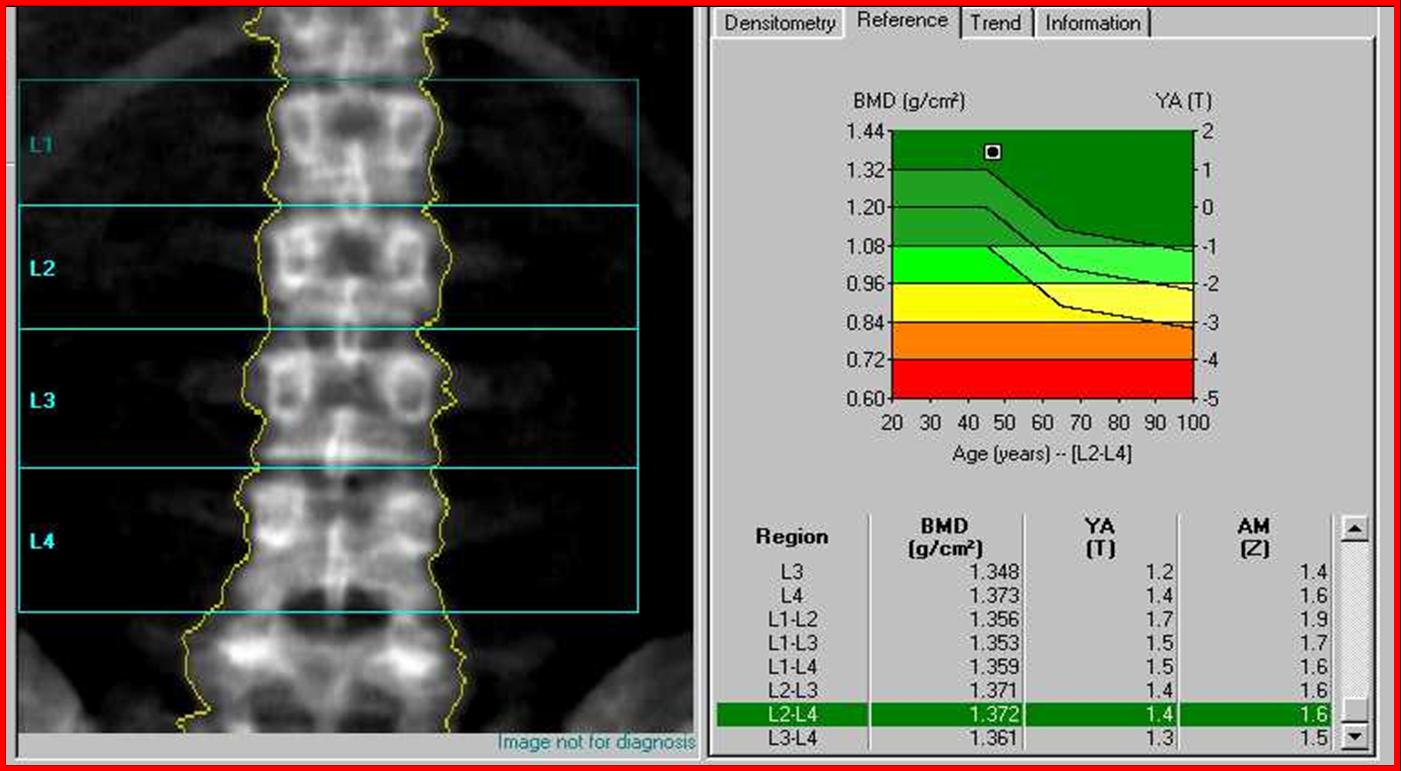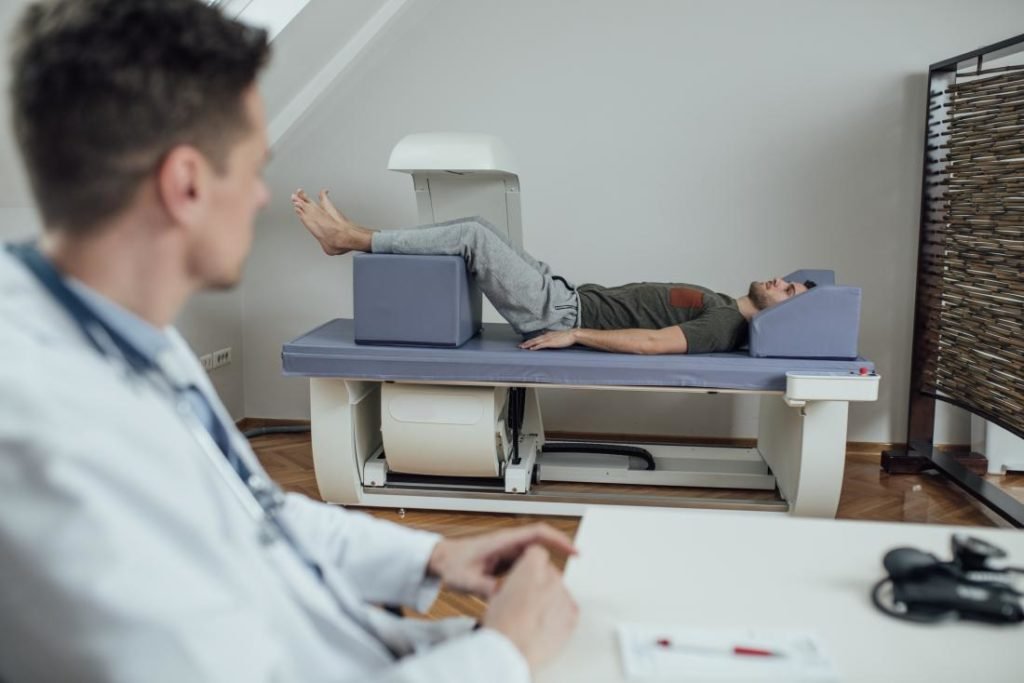

THIS PATIENT FALLS WITHIN THE RANGE OF OSTEOPENIA. In comparison to the prior examination of 10/25/06, there has been an increase in bone mineral density of the total hips of 0.3%. Bone mineral density of the total left hip is 0.933 gm/cm2 with a T-score of -1.2 and a Z-score of 0. The more standard deviations below 0, expressed as negative numbers, the lower your BMD and the higher your risk of fracture. Bone mineral density of the total right hip is 0.905 gm/cm2 with a T-score of -1.4 and a Z-score of -0.1.īone mineral density of the left femoral neck is 0.860 gm/cm2 with a T-score of -1.6 and a Z-score of 0.1. In comparison to the prior examination of 10/25/06, there has been a 1.3% increase in bone mineral density of L1 through L4.īone mineral density of the right femoral neck is 0.821 gm/cm2 with a T-score of -1.9 and a Z-score of -0.2. If you have any questions, please do not hesitate to telephone me.įINDINGS: Bone mineral density of L1 through L4 is 1.351 gm/cm2 with a T-score of 1.1 and a Z-score of 2.0. Given that this patient would be on long-term corticosteroids for polymyalgia rheumatica, it is reasonable to start a prophylactic bisphosphonate. Positive calcium balance with daily calcium doses of 1000-1500 mg daily and vitamin D intake of 800-1000 IU daily.ģ. A healthy lifestyle, including smoking cessation, reduction of alcohol and caffeine intake.Ģ. Bone mass measured by DEXA of the left femoral neck is slightly below expected range for age per the International Society of Clinical Densitometry.ġ. INTERPRETATION OF THE INITIAL BONE MINERAL DENSITY TEST:ġ. The T-Score compares to the patient’s bone mineral density (BMD) to the peak bone mass of young normal female the lower the number, the greater the loss of bone. In brief, the important findings include the following: the total bone mineral density, the corresponding T-score and the corresponding Z-score.

The regions of interest of the scan were the lumbar spine and the left hip. The technical quality of the study was good. The scan was performed utilizing a Hologic QDR-4500W machine. The indications for the study were corticosteroid use. Warning: other types of bone tests available in some pharmacies or shopping centres such as Heel Ultrasound are not the recommended standard test to measure bone strength.On January 2, 2011, we performed a DEXA bone mineral density test on your patient, Debra Jones.

Note: bone density scans emit a very low level of radiation (much less than a standard x-ray) and this is part of the reason a referral is required. It is important you are tested as directed by your doctor. Where rebates do not apply, patients with other risk factors can pay directly for a bone density scan. Individuals with coeliac disease (or other malabsorption conditions), overactive thyroid or parathyroid conditions, rheumatoid arthritis, liver or kidney disease.Corticosteroids use (common for asthma).Anyone with one or more previous fractures from a minor incident.Medicare rebates for a bone density scan apply for: Your doctor will advise if you are eligible for a Medicare rebate for your bone density. Your doctor will ensure adequate calcium, vitamin D and exercise together with your osteoporosis treatment. Your bone health will be monitored with regular scans (every 1 – 2 years). Your doctor will commonly commence osteoporosis treatment to protect your bone health and reduce the risk of a first fracture (or further fractures if one has occurred). Women who have entered menopause are at more risk of osteoporosis than women before menopause due to the decrease in oestrogen levels.

Osteoporosis is one of the leading causes of fractures in men and women over 60, with 42 of women over 50 likely to suffer from an osteoporotic fracture. If a fracture has occurred your doctor will commonly start treatment to reduce the risk of more fractures.ĭiagnosed osteoporosis requires immediate action as fracture risk is high. Maintaining your bone mineral density as a 50+ female. Your doctor will review any other health conditions or medications which can impact your bone health. Your doctor will aim to reduce further bone loss, monitor your bone health with a follow up scan (1 – 5 years) and ensure adequate calcium, vitamin D and exercise. The approach will be different if a fracture is present. Action may be taken to protect your bone health depending on your age, the level of bone density and any risk factors for osteoporosis. This means you have lower than normal bone density. Improvements in bone density and your bone health can be achieved over time. If the result shows osteopenia or osteoporosis it is essential action is taken to protect your bones. If your bone health is normal then maintaining adequate calcium, vitamin D and exercise remains important. Low bone density (called osteopenia) or.The result will commonly refer to a ‘T-score’ and indicate if your bones are in the range of either: A bone density scan will determine if any action is needed to protect your bone health.


 0 kommentar(er)
0 kommentar(er)
